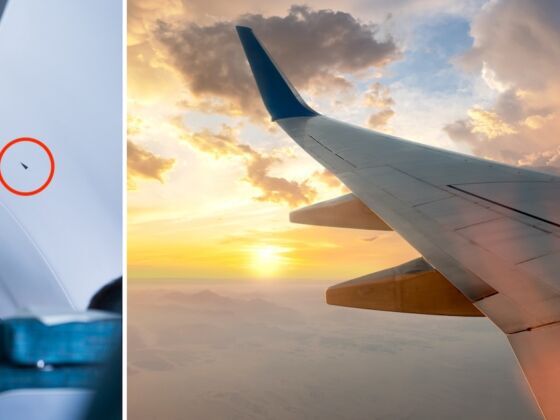When it comes to travel, there are generally two types of people: those who prefer the aisle seat, and those who always go window seat. Window seat sitters can be broken down even further to those who prefer wide-open views versus those who like having the wing in sight. Passengers in the latter camp can always tell the optimal over-the-wing seat thanks to a small triangle above the window.


This Small Triangle Indicates the Best (or for Some, Worst) Window Seat View on a Plane
@itsmekikooooo Did u ever notice that on an aircraft?✈️❤️#viral #fypageeeee #for #fypシ #fypage #foryou #foryoupage #fyp #cabincrew #cabincrewlife #stewardess #cabin ♬ original sound – .
Next time you board, take notice of seats marked with little triangles above a window on each side. These triangles line up with the wings, and are meant to give the flight crew an easy reference point to identify where the wings are. Why? It makes it easier for checking the slats, flaps, and other parts of the wing. This is often used to ensure the wings are de-iced in winter conditions before takeoff, but also helps the cabin crew quickly identify any wing issues that may be visible from the window.

Photo: leungchopan/Shutterstock
The seat has its own nickname as well: the William Shatner seat. This is because of the 1963 Twilight Zone episode “Nightmare at 20,000 Feet.” Shatner’s character, unable to sleep during a rough flight, has a perfect view of the wing. Only, when he looks out, he sees a gremlin that no one else believes is actually there. He gets carted off as a mad man when the plane lands. You (almost certainly) won’t be seeing gremlins or anything else hanging off of the wing if you sit in the William Shatner seat. You will, however, have the best chance at taking some of those cliché over-the-wing photos and videos as you fly over the clouds.